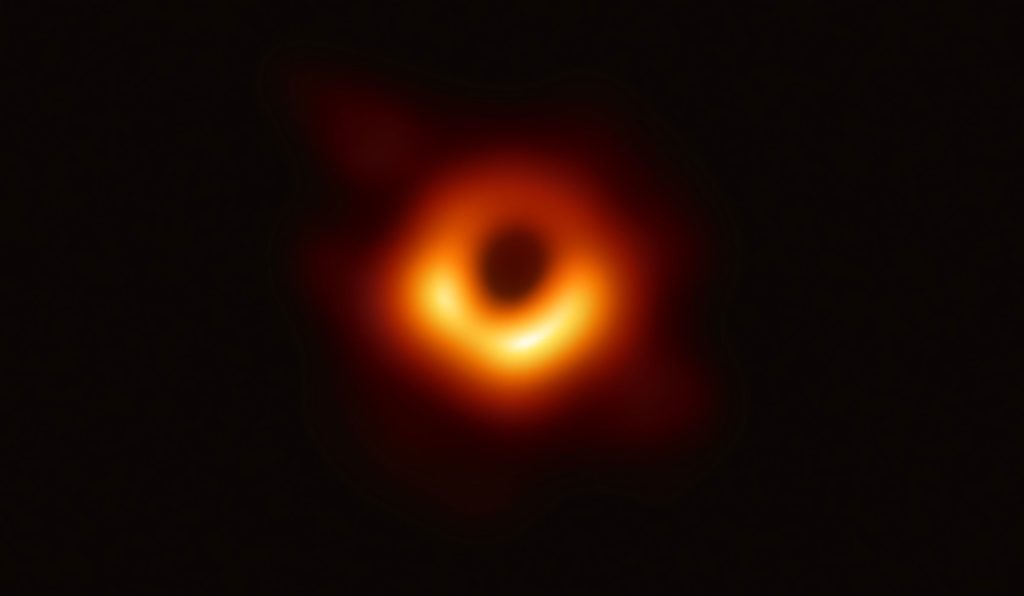By Muhammed Aladdin
For the first time in history, astronomers captured pictures for one of the most enigmatic celestial objects, a black hole, heralding a revolution in our understanding of the universe.
In the years since Physicist Albert Einstein hypothesized his theory of general relativity, predicting objects similar in characteristics to black holes, although he himself was skeptical about them, scientists have accumulated tonnes of evidence proving that such cosmetic mysteries are out there. However, photographing black holes proved to be a dreary task.

Black holes are infinitesimally small, colossally dense, and extremely distant objects. Directly observing them would require a telescope with a resolution equivalent to being able to see a doughnut on the moon; let that sink in for a minute!
The challenges did not stop here, as according to NASA, black holes are made up of huge amounts of matter squeezed into a small area, creating massive gravitational fields around them. This draws everything around them, including light, the fastest physical concept in all of our universe. Imagine black holes as the sinkholes of our universe, they draw everything into them and nothing can escape.

For humans to see something, they need that thing to be illuminated by light, and that is why photographing a black hole is such a difficult thing to do; light is sucked into it, so physically, humans can not see it.
At the event horizon, the boundary beyond which neither light nor matter can escape, the gravitational force of a black hole is so massive that it bends light in a perfect loop! Fun fact, scientists hypothesize that if a person stands in front of a black hole just before the event horizon, they could see the back of their own head.
Despite the challenges, a team of more than 200 scientists with the power of eight of the world’s leading radio observatories combining data into one gigantic telescope, the Event Horizon Telescope (EHT), was able to surmount the obstacles and capture the first-ever image of a black hole.

The one you see in pictures circulating on social media is a supermassive black hole located in the M87 Galaxy, 55 million lightyears away from earth. Scientists believe that the equivalent of six billion suns of light and matter have disappeared into this cosmic plughole.
The EHT is eyeing another black hole for a future project; Sagittarius A* is a black hole at the center of our galaxy, the Milky Way, and has the weight of four million suns.
Yesterday, history was made, yet scientists are still hungry for more. “The black hole is not the event horizon, it’s something inside. It could be something just inside the event horizon, an exotic object hovering just beneath the surface, or it could be a singularity at the center… or a ring,” said Ziri Younsi, a member of the EHT collaboration who is based at University College London. “It doesn’t yet give us an explanation of what’s going on inside.”

Heino Falcke, chair of the EHT science council, who is based at Radboud University in the Netherlands, said, “The big question for me is whether we’ll ever be able to transcend that limit. The answer may be maybe not. That’s frustrating but we’ll have to accept it.”



